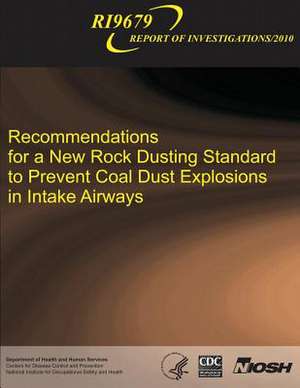Recommendations for a New Rock Dusting Standard to Prevent Coal Dust Explosions in Intake Airways
Autor Department of Health and Human Services, Centers for Disease Cont And Prevention, National Institute Fo Safety and Healthen Limba Engleză Paperback
Preț: 96.11 lei
Nou
Puncte Express: 144
Preț estimativ în valută:
18.39€ • 19.20$ • 15.19£
18.39€ • 19.20$ • 15.19£
Carte disponibilă
Livrare economică 25 martie-08 aprilie
Preluare comenzi: 021 569.72.76
Specificații
ISBN-13: 9781493584758
ISBN-10: 1493584758
Pagini: 58
Dimensiuni: 216 x 279 x 3 mm
Greutate: 0.16 kg
Editura: CREATESPACE
ISBN-10: 1493584758
Pagini: 58
Dimensiuni: 216 x 279 x 3 mm
Greutate: 0.16 kg
Editura: CREATESPACE
